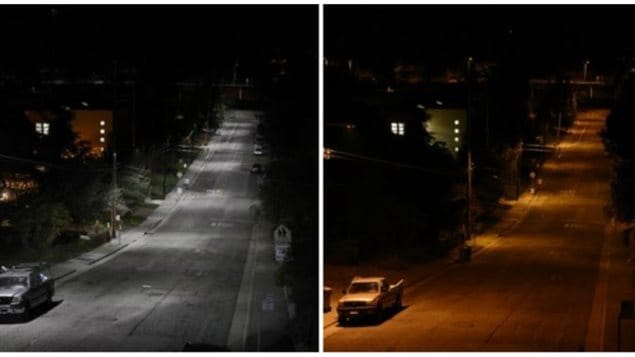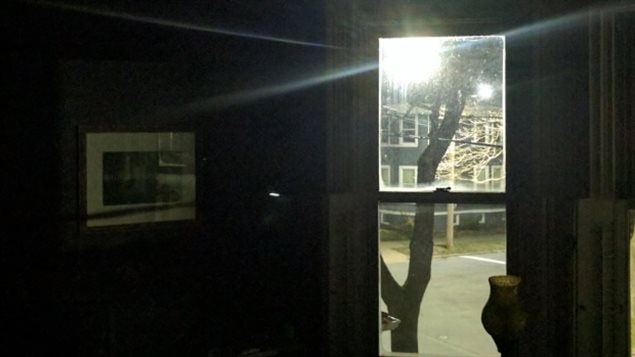Throughout North America cities are switching their streetlights from the previous standard of high pressure sodium lamps, to new LED lights.
The reason is cost. The LED’s use about half as much electricity and are claimed to last twice as long, both of which reduce costs to the city.
But not everyone is pleased.
Many residents in many cities say the lights are just too bright.

While the sodium lights gave off a kind of orange or yellowish light, the LED’s function at a much different light frequency, and can appear as a very harsh white.
Light “temperature” is measured in Kelvin and the sodium lights had a colour temperature at roughly between 2,000K to 2,500K
The new LED’s operate in a higher blue spectrum of light and emit their light in the range of 3,000K and higher, something that is viewed by people as a very bright and very harsh light.
Many residents also say the lights are simply too bright, turning the streets into something akin to a brightly lit parking lot.

Others say it’s disturbing their sleep and still others note that LED’s are contribution to the concerns of light pollution and the negative effect that can have on nature.
The American Medical Association say the blue light spectrum affects the production of melatonin, and has a five times greater affect on circadian rhythms than conventional street lamps. The AMA notes that they can cause retinal damage.
Many complaints
A quick search of the internet comes up with many stories of displeasure, problems, and concerns over the lights from places all over the world, although cities seem intent on the switchover.
Several cities have been installing LEDs with a 3,000K to 4,000K rating and say in spite of complaints the benefits outweigh the problems adding that it would now be too expensive for them to make any other changes to the LED’s in place.
Solutions are simply to purchase LEDs with a rating of less than 3.000K or follow the lead of some cities like that of Kitchener Ontario
That southwestern Ontario city installed wireless technology along with the lights when it switched its street lamps over to the LED’s so that it can simply dim the lights by 20 to 30 per cent.
Additional information- sources







For reasons beyond our control, and for an undetermined period of time, our comment section is now closed. However, our social networks remain open to your contributions.